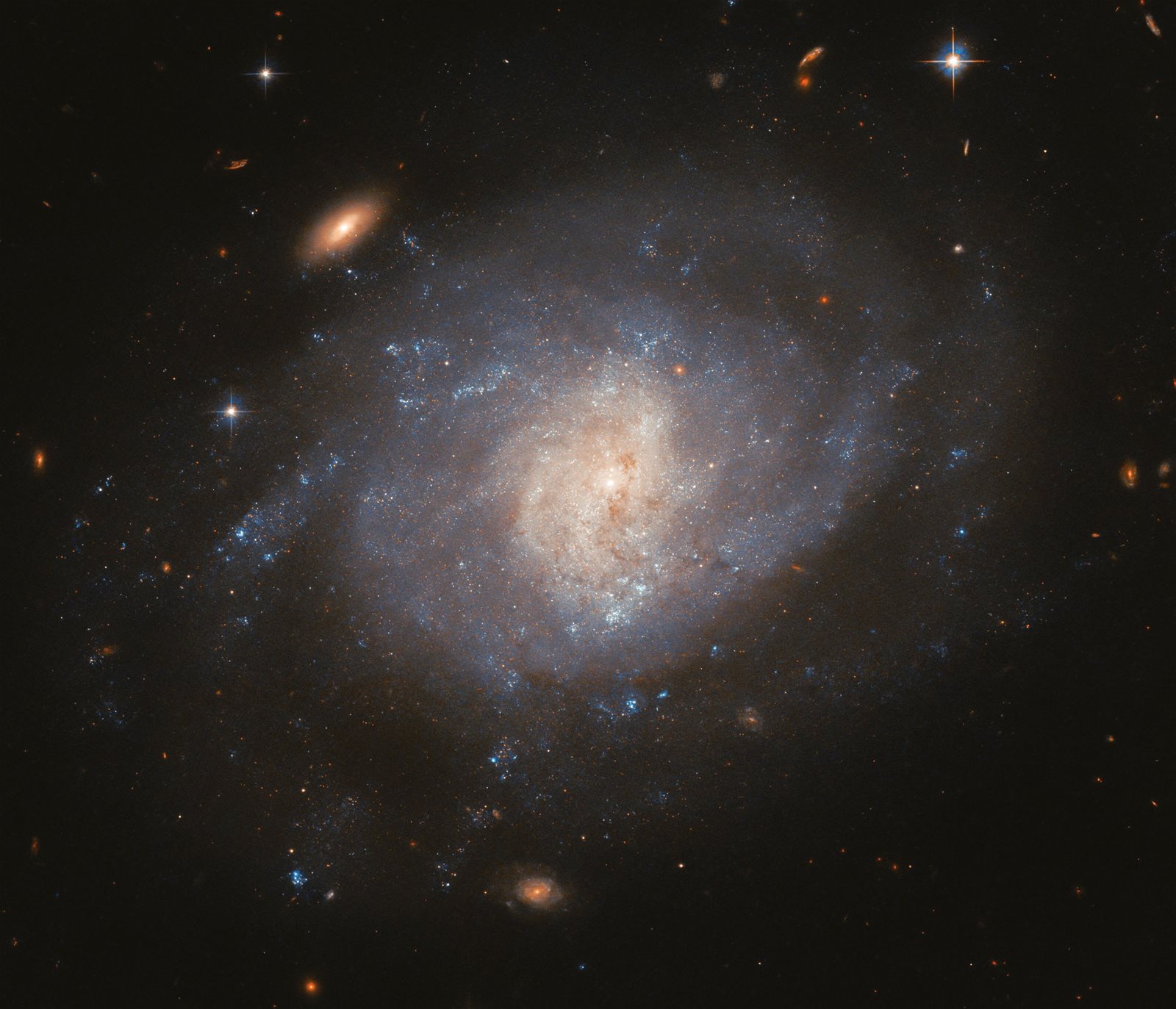
© ESA
The Hubble Space Telescope snapped a new view of a hazy spiral galaxy that once hosted a supernova explosion. The galaxy, formally known as NGC 941, lies about 55 million light years from Earth. Its spiral arms are bright but not very well defined, swirling outwards from a bright core into a faint halo of dimmer gas. Hubble’s Advanced Camera for Surveys (ACS) observed the remnants of a stellar explosion within the galaxy. When some stars reach the end of their lives, they explode in a brilliant burst called a supernova, which can briefly outshine the entire galaxy in which it sits. This particular supernova, known as SN 2005ad, has since faded, leaving behind seeds for future star formation.
Hubble’s view captures the galaxy face-on, showcasing the realm’s spiral structure and hazy surroundings. Using the Hubble data, SN 2005ad was also studied as part of a larger initiative to understand the environments in which hydrogen-rich supernovae, known as Type II, occur following the rapid collapse of a massive star. The initial discovery of supernova SN 2005ad was made by an amateur astronomer named Kōichi Itagaki, who has discovered over 170 supernovae. “This might raise the question of how an amateur astronomer could spot something like a supernova event before professional astronomers, who have access to telescopes such as Hubble,” ESA officials said. “The answer is in part that the detection of supernovae is a mixture of skill, facilities and luck.”